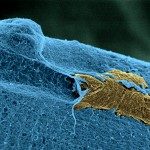Lien vers Pubmed [PMID] – 9364327
J. Neurosci. Res. 1997 Nov;50(3):421-32
Transferrin (Tf), the iron transport protein, is essential for the growth and differentiation of cells. Therefore, it provides an excellent model to analyze the regulatory mechanisms controlling the expression of a eukaryotic gene in different cell types and during fetal and adult life. In this study, the tissue-specific and developmental regulation of the Tf gene in vivo were analyzed. Human Tf mRNA was detected mainly in fetal and adult liver. A weaker expression was observed in adult and fetal brain and in fetal spleen. By in situ hybridization the presence of mouse Tf mRNA was detected in the hepatic primordia. This is the first observation pointing out Tf as an early marker of hepatic differentiation, prior to the formation of the liver. Thus, TF may be an important tool to follow the hepatic specification of the gut endoderm. Mouse Tf mRNA was also detected in the liver bud and subsequently in the liver throughout fetal life, and in newborn and adult animals. No expression of the Tf gene was observed in the mouse fetal central nervous system (CNS). In contrast, Tf mRNA was detected from the 5th day after birth in the derivatives of the caudal part of the neural tube and subsequently in the derivatives of the rhomboencephalon and that of the prosencephalon. These results indicate that Tf gene expression correlates with the postnatal development of oligodendrocytes in the mouse CNS. To test whether the control elements of the human gene previously found in ex vivo experiments were also active in vivo during fetal and adult life, we fused the -4000/+395′ flanking region of the human gene to the coding region of the lacZ gene and generated transgenic mice. The expression of the reporter gene during development was analyzed.

